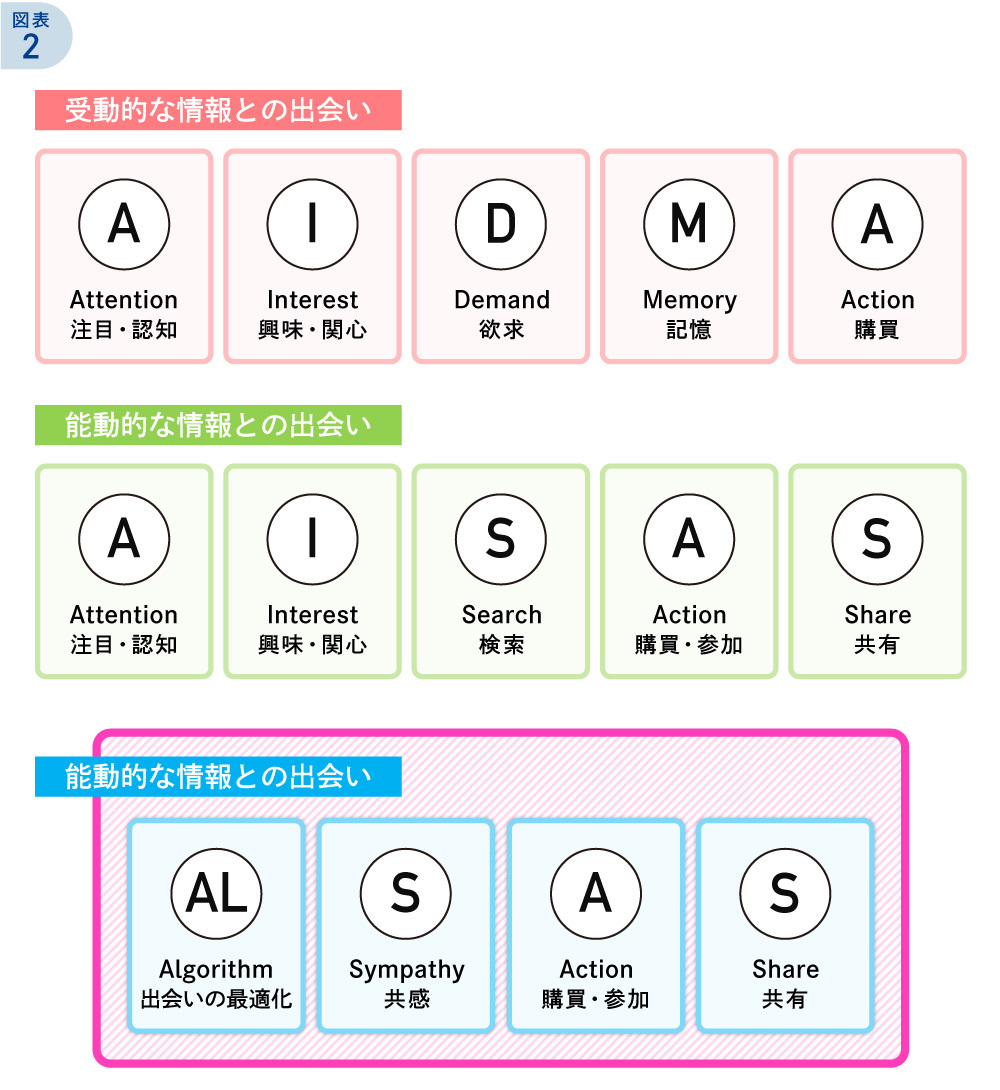Why Are Young People Obsessed with Photo Apps? Insights from Usage Patterns (December 25, 2015)
Web Dentsu Inc. News 10-Year Retrospective Project: This time, we look at the relationship between young people and media through the trends in communication apps popular with Generation Z!
Even since the launch of Web Dentsu News, the trends in communication apps used by young people and their relationship with media have constantly evolved. Regarding these trends in communication tools, the Web Dentsu News column series "The Future of Visual Communication with Dominique Chen," by the Media Innovation Research Department of DENTSU SOKEN INC., garnered significant attention.
Instagram, Twitter, Vine, Facebook, YouTube, Snapchat, MixChannel... Exploring How Visual Communication Apps Are Used Differently
(Excerpt)
Shitara: On the other hand, some users avoid platforms with a lot of boastful photos. Instagram has an unspoken rule that emerged organically among users: "post nice-looking photos." Negative elements or anything uncool are taboo, so some people get "Instagram fatigue" from its overly stylish atmosphere.
There's also the "hint-post" trend, where couples clearly together only show the man's hand in the shot, subtly hinting at their presence.
Amano: It's become a space for sophisticated appeal or ostentatious display. This might reflect a trend where the stage for showing off has shifted from the city streets to social media.
Shitara: Besides Instagram, apps frequently used include Twitter, Vine, and Facebook. Even on platforms like Twitter and Facebook, which have been around longer, text elements are decreasing while the proportion of photo and video sharing is increasing.
Amano: The way we consume media—whether we view it vertically or horizontally on our smartphones—has also been getting attention lately.
I've heard comments like: square photos look cool on Instagram, short-form content like Vine is better viewed vertically, but watching a favorite artist's live performance slowly on YouTube is better horizontally.
Since video consumption often happens within the flow of social media and curated services, it's likely that people are increasingly watching in portrait mode as usual.
(Excerpt from Part 1 of the series: " Why Young People Are Obsessed with Photo Apps: Insights from Actual Usage ")
・"The Future of Visual Communication with Dominic Chen" series is here
Approximately 8 years have passed since this article. Video apps like TikTok and YouTube Shorts, which offer shorter, catchier content, have flourished. Additionally, Twitter changed its name to "X" and has undergone repeated specification changes, indicating that the apps themselves are expected to continue evolving.
For Web Dentsu Inc.'s 10th anniversary project, we invited Akira Amano—who participated in the original roundtable and has since authored numerous articles on communication app and media trends—to contribute on the theme of "Changes in the Relationship Between Young People and Media" as he perceives it eight years later.
The Major Shifts in SNS Service Trends Over 8 Years
As part of this Web Dentsu Inc. 10-Year Retrospective project, I revisited articles from 2015. It struck me anew how drastically the landscape has shifted in just these eight years. This truly demonstrates how rapidly this field evolves.
The author conducted intensive research on the relationship between young people and media from 2014 to 2015. At that time, the Instagram boom was rapidly gaining momentum, culminating in "Instagrammable" (インスタ映え) winning the New Word of the Year Award in 2017. This led to the publication of a monograph on the theme, "The Psychology of Wanting to Share: Seven Perspectives for Understanding the SNS Information Environment," in October of that same year.
Instagrammers sharing trends and lifestyles came into the spotlight, and alongside the YouTubers who flourished around the same time, influencer marketing became firmly established in society around this period. Notably, "influencer" was also selected as the second most popular new word of the year by Sanseido in 2017.
Web Dentsu Inc. also published an article exploring the strengths of this influencer marketing.
While SNS marketing itself began gaining attention around 2010, this period clearly marked what could be called "Phase 2." In practice, business demands like "We want to know SNS marketing trends" and "We need consulting on SNS utilization" increased significantly. Today, corporate use of SNS is simply a given.
Then, in 2018, it began showing signs of becoming popular in Japan, achieving rapid growth over the subsequent five years or so. Short videos—not just TikTok, but also Instagram Reels, YouTube Shorts, LINE VOOM, and others—have become standard components of marketing strategies.
The author also leads an in-house TikTok utilization project called "TikTok Solution Lab" and published a new book last year compiling insights from this work.
After text-based services like blogs and the old Twitter gained traction, visual-centric services like Instagram became popular, and video services like YouTube spread widely, the next wave saw short-form video services—occupying that "middle ground"—boom as users sought greater time efficiency. Looking back, this broader perspective seems to emerge. New service areas continuously emerge, filling users' unmet needs.
Information Behavior in the Age of Algorithms and Time Efficiency
Over the past eight years or so, alongside shifts in services, the way we gather information has changed. The volume of information circulating daily has increased dramatically, making selection and prioritization crucial. Unlike in the past, it's not information itself but the "leisure time/disposable time" of the people receiving it that has become the scarce resource.
As shown in Figure 1, the information media environment has undergone significant transformation. Over the past decade, social media has surged in popularity, leading us to increasingly rely on information from our friends, acquaintances, and trusted opinion leaders/influencers. Observing how users explore information on social media based on hashtag searches, I previously introduced the keyword "From Googling to Tagging."
As we transitioned from the search engine era to the SNS era, users deepened their style of actively seeking and discovering information. However, aren't we now increasingly shifting towards relying on information recommended by machines? In other words, we are shifting from the era of "empathy and engagement through SNS," mentioned in the previous article, to the era of "attention driven by AI/algorithms" (of course, this is a schematic整理, so it doesn't transition cleanly from zero to one; they will coexist).
For us, who fundamentally must demand a certain level of "time performance," algorithmic screening and recommendation have become indispensable. In other words, the modern era is one where "content discovers the user."
AIDMA, AISAS, and the Expansion to ALSAS
In the realm of advertising marketing, modeling consumer psychology and behavioral processes has been a hot topic of discussion. The most well-known models are probably "AIDMA," proposed in the 1920s, and "AISAS," proposed in 2004.
And what I have recently proposed in my books and other works is "ALSAS."
It stands for "ALgorithm" → "Sympathy" → "Action" → "Share".
The crucial part is the initial "AL." This signifies how mechanisms that display tailored information to each user on platforms like SNS have become a primary contact point for many consumers.
Where AIDMA represents passive information contact (consumers are passive = receiving information) and AISAS represents active information contact (consumers are active = seeking information), ALSAS can be distinguished as "middle-active" information contact (consumers are middle-active = integrated into the information process).
We believe the term "middle voice" is most suitable for describing this recursive encounter with information, where our behavioral history becomes learning data for AI, which then returns as "recommendations."
While this article does not delve into it in detail, discussions surrounding the middle voice are thoroughly covered in the works and interviews of Professor Koichiro Kokubu (Graduate School of Arts and Sciences, The University of Tokyo). I feel there is still ample room to utilize this concept within the contexts of advertising communication and the information behaviors of younger generations.
The Future of Youth and Media: How Will New Points of Contact Emerge?
I've shared some reflections from 2023 looking back on 2015, and it's expected that various new SNS platforms will continue to emerge in this field going forward.
At the time of writing, the popularity of photo-sharing services like "BeReal" is an intriguing trend. BeReal allows only one post per day, with notifications prompting users to post at random times. The system requires posting an unedited, real-time photo rather than a prepared (saved) one. Its growing support, particularly among younger demographics, can be interpreted as reflecting a counter-culture sentiment towards existing SNS platforms that have fostered the so-called "Instagrammable" culture.
That said, it remains unclear whether it will show enough scalability to replace existing SNS platforms. Platform services with massive user bases possess a stable, rock-solid presence, despite occasional ups and downs, largely due to the network effect at play.
Network effects refer to "the value of a good or service increasing or decreasing depending on the number of users utilizing it." SNS platforms are prime examples of this, as their value is intrinsically tied to who is using them—in contrast, you'd likely choose a refrigerator based on its usability and functional value. The network effect makes it difficult for the value of an SNS already used by many users to diminish (conversely, it also makes it harder for competitors to enter).
That said, there are inevitably needs that existing giant SNS platforms cannot fully cover. Emerging SNS platforms appear to fill these niches (gaps). A cycle where existing giant SNS and emerging SNS coexist while partially undergoing renewal will likely continue repeating.
Another topic I'm most focused on right now is how generative AI will be used and what role it will play within the social media ecosystem. After all, the value of SNS (or social media in the broadest sense) ultimately hinges on the volume and quality of UGC (user-generated content) circulating within it.
If users can easily create rich content using generative AI, the presence of UGC should grow even stronger. For example, in the US, "fictional karaoke" audio—where the voices of top-tier musicians are synthesized to sing songs—went viral on short video services.
While some musicians demand such activities be banned, others take the stance of allowing usage, stating, "You can use my voice, but I want half the royalties." Many of these creators are fans of the musicians themselves, and their use of generative AI to create and spread UGC can be seen as a form of fan activity.
※Viral = Information spreading gradually through word of mouth.
Examples are also emerging in the advertising communication sphere. For instance, Heinz's "A.I. Ketchup," a recent Cannes Lions winner, used generative AI to solicit ketchup-related drawings (UGC) tied to the brand and effectively leveraged them for promotion. It was recognized for generating higher buzz and increasing brand affinity compared to conventional social media campaigns.
In this way, new technologies connect brands, media, and consumers in unprecedented ways. Paying particular attention to younger generations' media usage and information behaviors is essential precisely because they swiftly adapt to new things and brilliantly update these "existing rules."
The profound depth of this theme stems from its seamless connection to broader societal shifts. We intend to continue exploring the nature of this shift, aiming to develop and disseminate meaningful insights for a wide audience.










